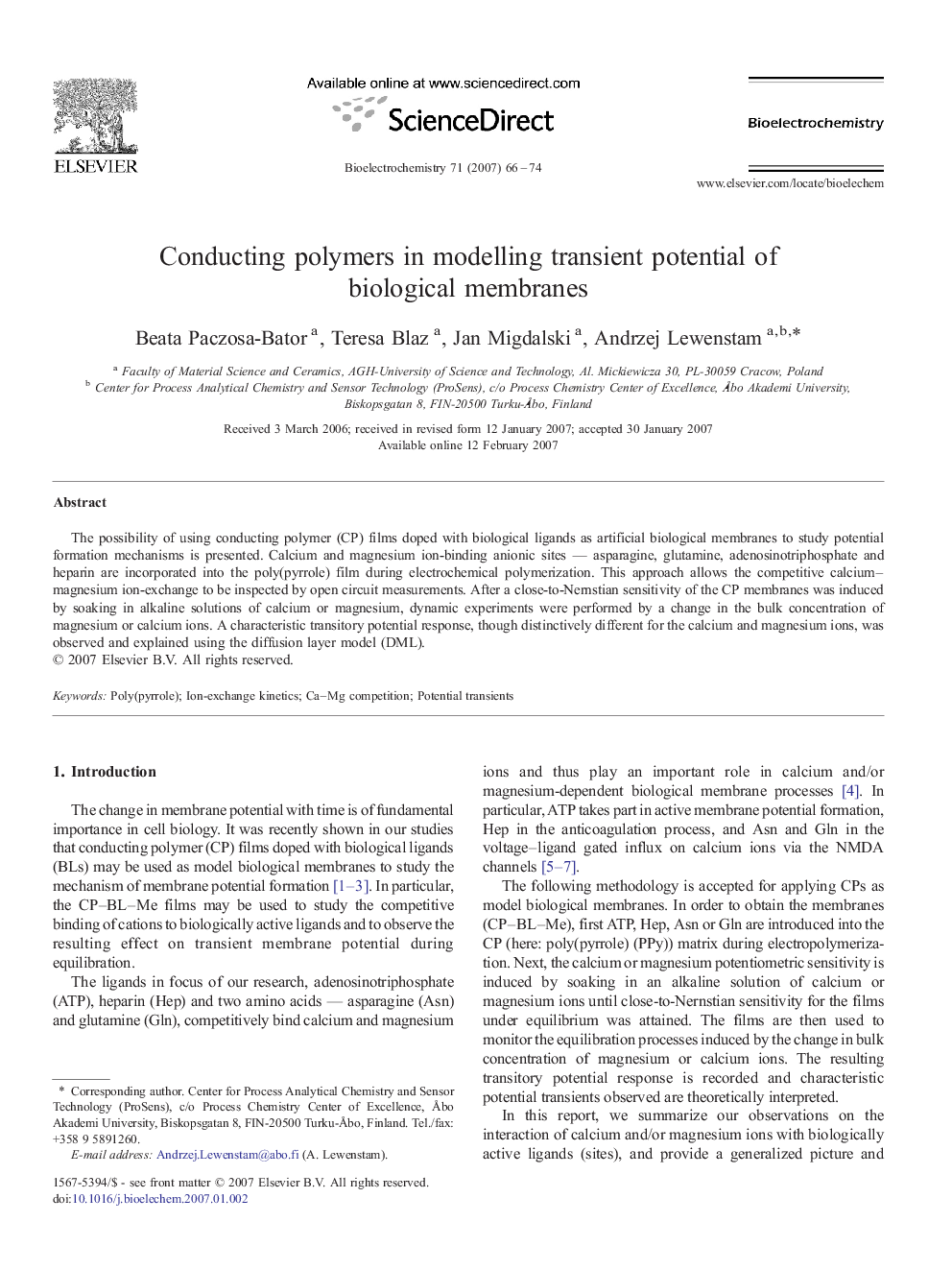| Article ID | Journal | Published Year | Pages | File Type |
|---|---|---|---|---|
| 1268944 | Bioelectrochemistry | 2007 | 9 Pages |
The possibility of using conducting polymer (CP) films doped with biological ligands as artificial biological membranes to study potential formation mechanisms is presented. Calcium and magnesium ion-binding anionic sites — asparagine, glutamine, adenosinotriphosphate and heparin are incorporated into the poly(pyrrole) film during electrochemical polymerization. This approach allows the competitive calcium–magnesium ion-exchange to be inspected by open circuit measurements. After a close-to-Nernstian sensitivity of the CP membranes was induced by soaking in alkaline solutions of calcium or magnesium, dynamic experiments were performed by a change in the bulk concentration of magnesium or calcium ions. A characteristic transitory potential response, though distinctively different for the calcium and magnesium ions, was observed and explained using the diffusion layer model (DML).
